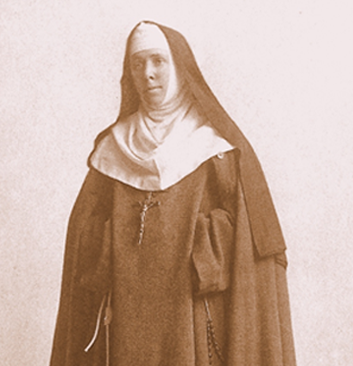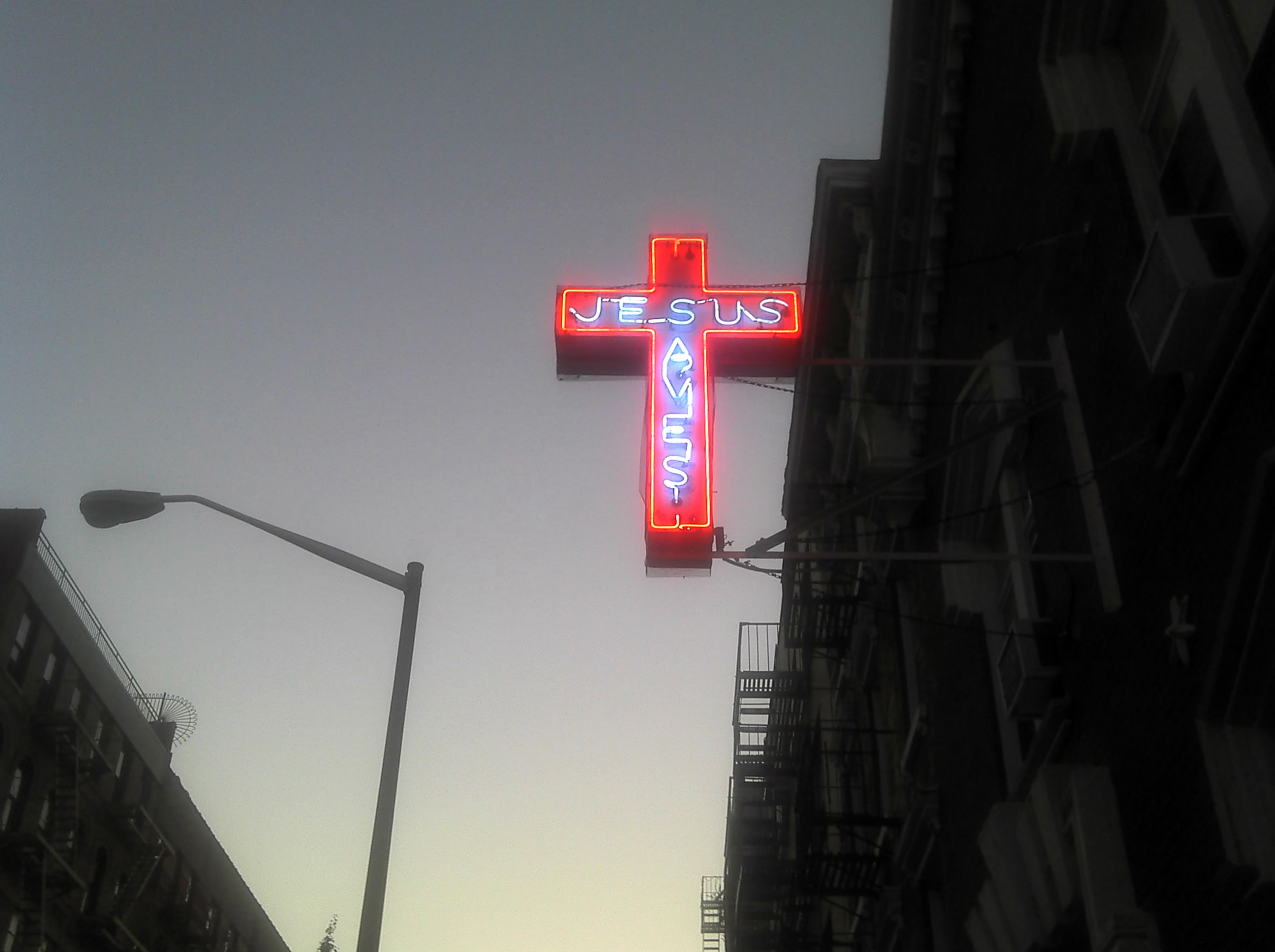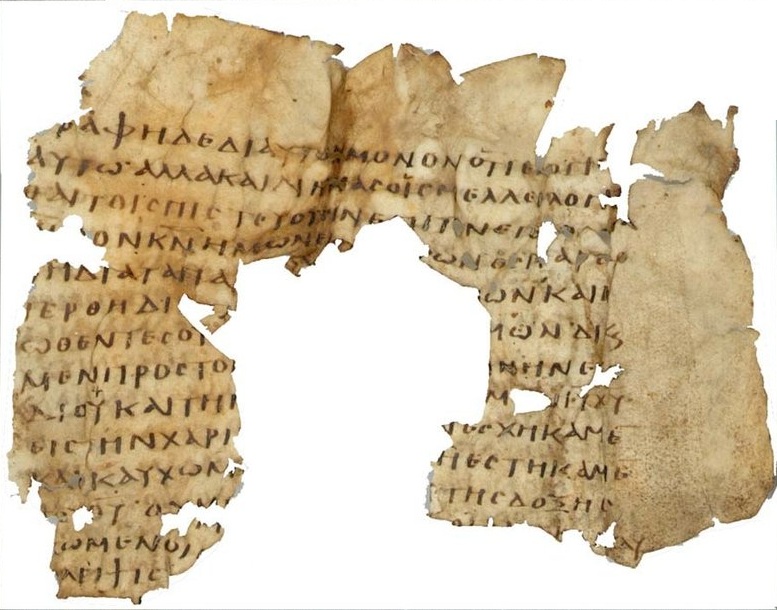 |
Society Of The Atonement
The Society of the Atonement, also known as the Friars and Sisters of the Atonement or Graymoor Friars and Sisters is a Franciscan religious congregation in the Catholic Church. The friars and sisters were founded in 1898 by Paul Wattson as a religious community in the Episcopal Church. The religious order is dedicated to the Blessed Virgin Mary under the Marian title of Our Lady of Atonement. History Lewis T. Wattson Lewis Thomas Wattson, called Father Paul Wattson, was born in Millington, Maryland, on January 16, 1863, to Joseph Newton Wattson and his wife, Mary Electa. Joseph Wattson, a former Presbyterian, was an Episcopalian minister. Lewis received his B.A. (1882) and his M.A. (1885) from St. Stephen's College, Annandale-on-Hudson, New York. He was ordained to the diaconate in 1885, and by special dispensation, at the age of twenty-three, he was made a presbyter. Wattson was graduated with a Bachelor of Divinity from the General Theological Seminary in New York City in 1 ... [...More Info...] [...Related Items...] OR: [Wikipedia] [Google] [Baidu] |
 |
Franciscan
, image = FrancescoCoA PioM.svg , image_size = 200px , caption = A cross, Christ's arm and Saint Francis's arm, a universal symbol of the Franciscans , abbreviation = OFM , predecessor = , merged = , formation = , founder = Francis of Assisi , founding_location = , extinction = , merger = , type = Mendicant Order of Pontifical Right for men , status = , purpose = , headquarters = Via S. Maria Mediatrice 25, 00165 Rome, Italy , location = , coords = , region = , services = , membership = 12,476 members (8,512 priests) as of 2020 , language = , sec_gen = , leader_title = Motto , leader_name = ''Pax et bonum'' ''Peace and llgood'' , leader_title2 = Minister General , leader_name2 = ... [...More Info...] [...Related Items...] OR: [Wikipedia] [Google] [Baidu] |
|
High Church
The term ''high church'' refers to beliefs and practices of Christian ecclesiology, liturgy, and theology that emphasize formality and resistance to modernisation. Although used in connection with various Christian traditions, the term originated in and has been principally associated with the Anglican tradition, where it describes churches using a number of ritual practices associated in the popular mind with Roman Catholicism and Eastern Orthodoxy. The opposite tradition is '' low church''. Contemporary media discussing Anglican churches erroneously prefer the terms evangelical to ''low church'' and Anglo-Catholic to ''high church'', even though their meanings do not exactly correspond. Other contemporary denominations that contain high church wings include some Lutheran, Presbyterian, and Methodist churches. Variations Because of its history, the term ''high church'' also refers to aspects of Anglicanism quite distinct from the Oxford Movement or Anglo-Catholicism. The ... [...More Info...] [...Related Items...] OR: [Wikipedia] [Google] [Baidu] |
|
|
Jesus
Jesus, likely from he, יֵשׁוּעַ, translit=Yēšūaʿ, label=Hebrew/Aramaic ( AD 30 or 33), also referred to as Jesus Christ or Jesus of Nazareth (among other names and titles), was a first-century Jewish preacher and religious leader; he is the central figure of Christianity, the world's largest religion. Most Christians believe he is the incarnation of God the Son and the awaited Messiah (the Christ) prophesied in the Hebrew Bible. Virtually all modern scholars of antiquity agree that Jesus existed historically. Research into the historical Jesus has yielded some uncertainty on the historical reliability of the Gospels and on how closely the Jesus portrayed in the New Testament reflects the historical Jesus, as the only detailed records of Jesus' life are contained in the Gospels. Jesus was a Galilean Jew who was circumcised, was baptized by John the Baptist, began his own ministry and was often referred to as "rabbi". Jesus debated with fellow ... [...More Info...] [...Related Items...] OR: [Wikipedia] [Google] [Baidu] |
|
 |
Atonement In Christianity
In Christianity, salvation (also called deliverance or redemption) is the "saving fhuman beings from sin and its consequences, which include death and separation from God" by Christ's death and resurrection, and the justification following this salvation. While the idea of Jesus' death as an atonement for human sin was recorded in the Christian Bible, and was elaborated in Paul's epistles and in the Gospels, Paul saw the faithful redeemed by participation in Jesus' death and rising. Early Christians regarded themselves as partaking in a new covenant with God, open to both Jews and Gentiles, through the sacrificial death and subsequent exaltation of Jesus Christ. Early Christian notions of the person and sacrificial role of Jesus in human salvation were further elaborated by the Church Fathers, medieval writers and modern scholars in various atonement theories, such as the ransom theory, Christus Victor theory, recapitulation theory, satisfaction theory, penal subst ... [...More Info...] [...Related Items...] OR: [Wikipedia] [Google] [Baidu] |
.jpg) |
Bible
The Bible (from Koine Greek , , 'the books') is a collection of religious texts or scriptures that are held to be sacred in Christianity, Judaism, Samaritanism, and many other religions. The Bible is an anthologya compilation of texts of a variety of forms originally written in Hebrew, Aramaic, and Koine Greek. These texts include instructions, stories, poetry, and prophecies, among other genres. The collection of materials that are accepted as part of the Bible by a particular religious tradition or community is called a biblical canon. Believers in the Bible generally consider it to be a product of divine inspiration, but the way they understand what that means and interpret the text can vary. The religious texts were compiled by different religious communities into various official collections. The earliest contained the first five books of the Bible. It is called the Torah in Hebrew and the Pentateuch (meaning ''five books'') in Greek; the second oldest part wa ... [...More Info...] [...Related Items...] OR: [Wikipedia] [Google] [Baidu] |
 |
King James Version
The King James Version (KJV), also the King James Bible (KJB) and the Authorized Version, is an English translation of the Christian Bible for the Church of England, which was commissioned in 1604 and published in 1611, by sponsorship of King James VI and I. The 80 books of the King James Version include 39 books of the Old Testament, an intertestamental section containing 14 books of what Protestants consider the Apocrypha, and the 27 books of the New Testament. Noted for its "majesty of style", the King James Version has been described as one of the most important books in English culture and a driving force in the shaping of the English-speaking world. The KJV was first printed by John Norton and Robert Barker, who both held the post of the King's Printer, and was the third translation into English language approved by the English Church authorities: The first had been the Great Bible, commissioned in the reign of King Henry VIII (1535), and the second had been th ... [...More Info...] [...Related Items...] OR: [Wikipedia] [Google] [Baidu] |
 |
Epistle To The Romans
The Epistle to the Romans is the sixth book in the New Testament, and the longest of the thirteen Pauline epistles. Biblical scholars agree that it was composed by Paul the Apostle to explain that salvation is offered through the gospel of Jesus Christ. Romans was likely written while Paul was staying in the house of Gaius in Corinth. The epistle was probably transcribed by Paul's amanuensis Tertius and is dated AD late 55 to early 57. Consisting of 16 chapters, versions with only the first 14 or 15 chapters circulated early. Some of these recensions lacked all reference to the original audience of Christians in Rome making it very general in nature. Other textual variants include subscripts explicitly mentioning Corinth as the place of composition and name Phoebe, a deacon of the church in Cenchreae, as the messenger who took the epistle to Rome. Prior to composing the epistle, Paul had evangelized the areas surrounding the Aegean Sea and was eager to take the gospel fa ... [...More Info...] [...Related Items...] OR: [Wikipedia] [Google] [Baidu] |
 |
Anglican Communion
The Anglican Communion is the third largest Christian communion after the Roman Catholic and Eastern Orthodox churches. Founded in 1867 in London, the communion has more than 85 million members within the Church of England and other autocephalous national and regional churches in full communion. The traditional origins of Anglican doctrine are summarised in the Thirty-nine Articles (1571). The Archbishop of Canterbury (, Justin Welby) in England acts as a focus of unity, recognised as ' ("first among equals"), but does not exercise authority in Anglican provinces outside of the Church of England. Most, but not all, member churches of the communion are the historic national or regional Anglican churches. The Anglican Communion was officially and formally organised and recognised as such at the Lambeth Conference in 1867 in London under the leadership of Charles Longley, Archbishop of Canterbury. The churches of the Anglican Communion consider themselves to be p ... [...More Info...] [...Related Items...] OR: [Wikipedia] [Google] [Baidu] |
|
Covenant (religion)
In religion, a covenant is a formal alliance or agreement made by God with a religious community or with humanity in general. The concept, central to the Abrahamic religions, is derived from the biblical covenants, notably from the Abrahamic covenant. Christianity asserts that God made an additional covenant through Jesus Christ, called the "new covenant". A covenant in its most general sense and historical sense, is a solemn promise to engage in or refrain from a specified action. A covenant is a type of agreement analogous to a contractual condition. The covenantor makes a promise to a covenantee to do (affirmative covenant) or not do some action (negative covenant). Biblical Covenant is the customary word used to translate the Hebrew word ''berith''. It is used in the Masoretic Text 264 times. The equivalent word in the Septuagint and the Greek New Testament is , ''diatheke''. Judaism The Mosaic covenant refers to a biblical covenant between God and the biblical Israelite ... [...More Info...] [...Related Items...] OR: [Wikipedia] [Google] [Baidu] |
|
 |
Warwick, New York
Warwick is a town in the southwestern part of Orange County, New York, United States. Its population was 32,027 at the 2020 census. The town contains three villages (Florida, Greenwood Lake, and Warwick) and eight hamlets (Amity, Bellvale, Edenville, Little York, Wisner, New Milford, Pine Island, and Sterling Forest). History In the early 1700s, one of the original patent holders, Benjamin Aske, named his land "Warwick", presumably after an area of England near his original ancestral home. He began to sell it off to settlers in 1719. His first parcel of land, 100 acres, was sold to Lawrence Decker. Other familiar family names of the Valley appeared in subsequent years. The European population of the valley grew rapidly from 1730 to 1765, and the previously existing populations of indigenous native people declined as forests and land were cleared for pasture and were re-organized. By the start of the American Revolution, almost all of the native population had disappeared in ... [...More Info...] [...Related Items...] OR: [Wikipedia] [Google] [Baidu] |
 |
Bishop Of Rome
A bishop is an ordained clergy member who is entrusted with a position of authority and oversight in a religious institution. In Christianity, bishops are normally responsible for the governance of dioceses. The role or office of bishop is called episcopacy. Organizationally, several Christian denominations utilize ecclesiastical structures that call for the position of bishops, while other denominations have dispensed with this office, seeing it as a symbol of power. Bishops have also exercised political authority. Traditionally, bishops claim apostolic succession, a direct historical lineage dating back to the original Twelve Apostles or Saint Paul. The bishops are by doctrine understood as those who possess the full priesthood given by Jesus Christ, and therefore may ordain other clergy, including other bishops. A person ordained as a deacon, priest (i.e. presbyter), and then bishop is understood to hold the fullness of the ministerial priesthood, given responsibi ... [...More Info...] [...Related Items...] OR: [Wikipedia] [Google] [Baidu] |
 |
Anglican
Anglicanism is a Western Christian tradition that has developed from the practices, liturgy, and identity of the Church of England following the English Reformation, in the context of the Protestant Reformation in Europe. It is one of the largest branches of Christianity, with around 110 million adherents worldwide . Adherents of Anglicanism are called ''Anglicans''; they are also called ''Episcopalians'' in some countries. The majority of Anglicans are members of national or regional ecclesiastical provinces of the international Anglican Communion, which forms the third-largest Christian communion in the world, after the Roman Catholic Church and the Eastern Orthodox Church. These provinces are in full communion with the See of Canterbury and thus with the Archbishop of Canterbury, whom the communion refers to as its ''primus inter pares'' (Latin, 'first among equals'). The Archbishop calls the decennial Lambeth Conference, chairs the meeting of primates, and is ... [...More Info...] [...Related Items...] OR: [Wikipedia] [Google] [Baidu] |